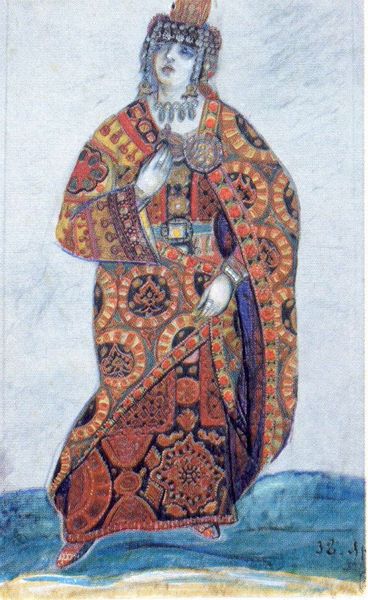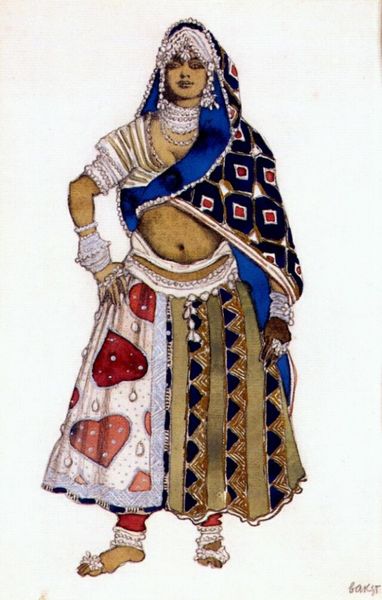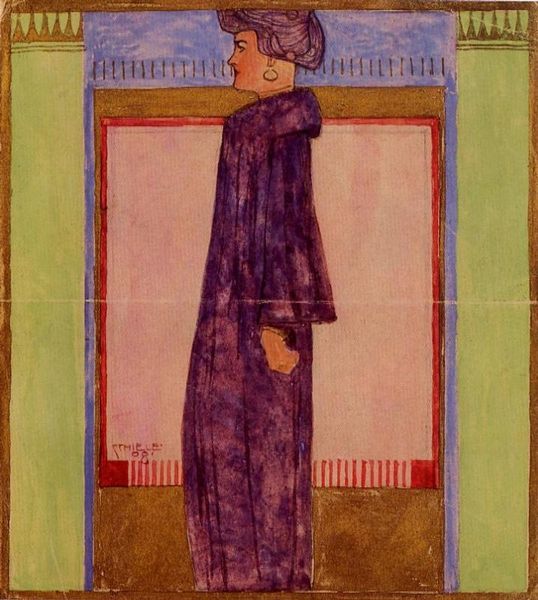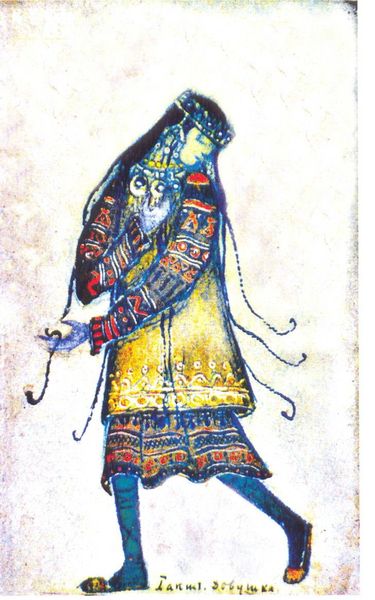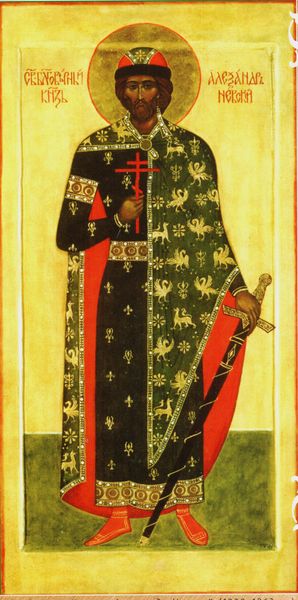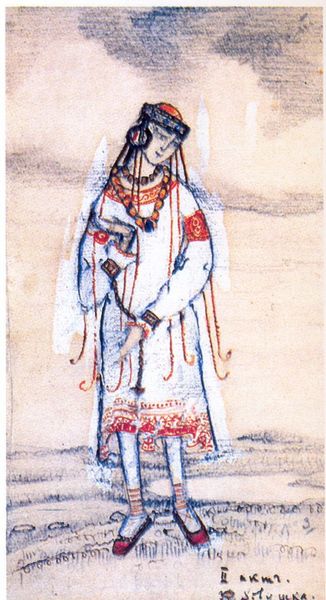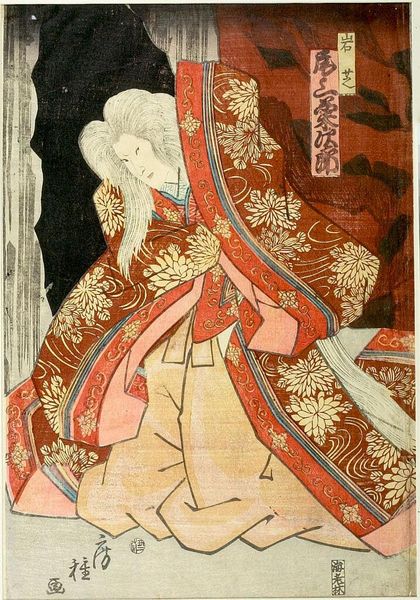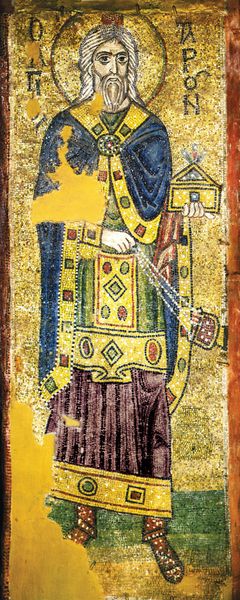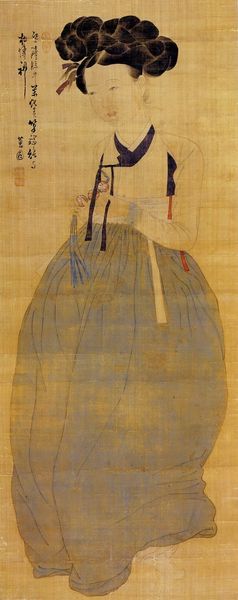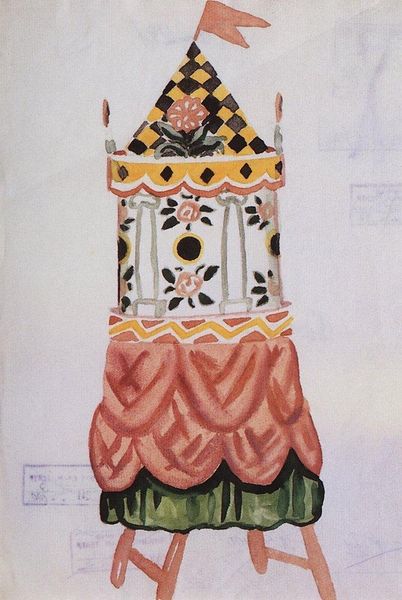
gouache
#
portrait
#
gouache
#
gouache
#
asian-art
#
figuration
#
costume
#
symbolism
Copyright: Public domain
Editor: This is Nicholas Roerich's 1912 gouache, *Oze*. There’s an almost ethereal quality to this image, despite the detailed rendering of the figure's clothing and features. The woman depicted seems burdened yet dignified. What can you tell me about the historical context of this piece? Curator: Looking at *Oze* through a historical lens, it is crucial to consider Roerich's deep engagement with Russian folklore and the symbolism embedded in it. Costume design sketches like this one, reflect a renewed interest in national identity that took shape in pre-Revolutionary Russia. Notice how this drawing highlights details of ornamentation of the attire, which might represent social class, regions, or mythical associations. What does her posture and the color choices suggest to you? Editor: I noticed her stance makes her look old and tired. The reddish tones give her a stern appearance. I see some references of Asian art too. But why focus on the figure and attire instead of portraying a historical event, or myth? Curator: That's a really great point. Roerich and many of his contemporaries believed that by returning to Russia’s distant, legendary past—reimagining it, perhaps, through design for opera and ballet—they could define a unique and spiritually powerful Russian cultural identity that would resonate with a broad audience, despite or because of their social status. Her stern look perhaps echoes Russia’s difficult history, in the rise of social realism as a symbolic counterpoint to Western dominance. Do you see how art becomes a site of cultural and political negotiation here? Editor: That’s fascinating! I hadn’t considered the role of art in shaping national identity. I’ll definitely keep that in mind going forward. Curator: Absolutely, *Oze* helps us see how costume design can speak volumes about cultural pride and societal narratives.
Comments
No comments
Be the first to comment and join the conversation on the ultimate creative platform.
